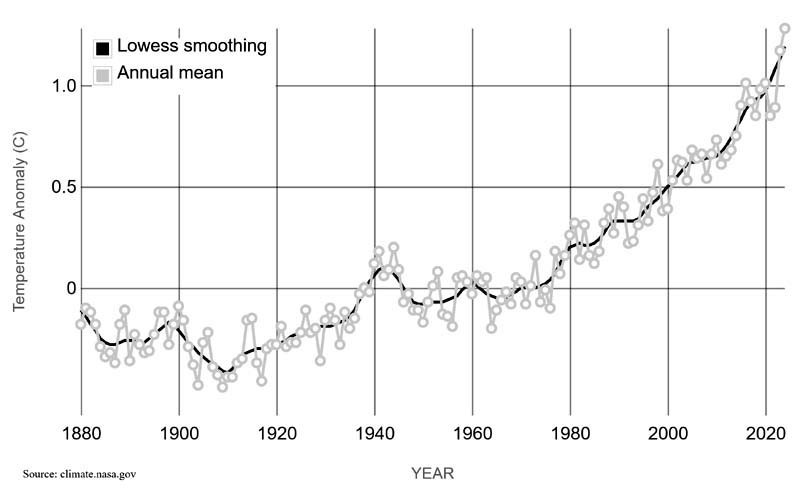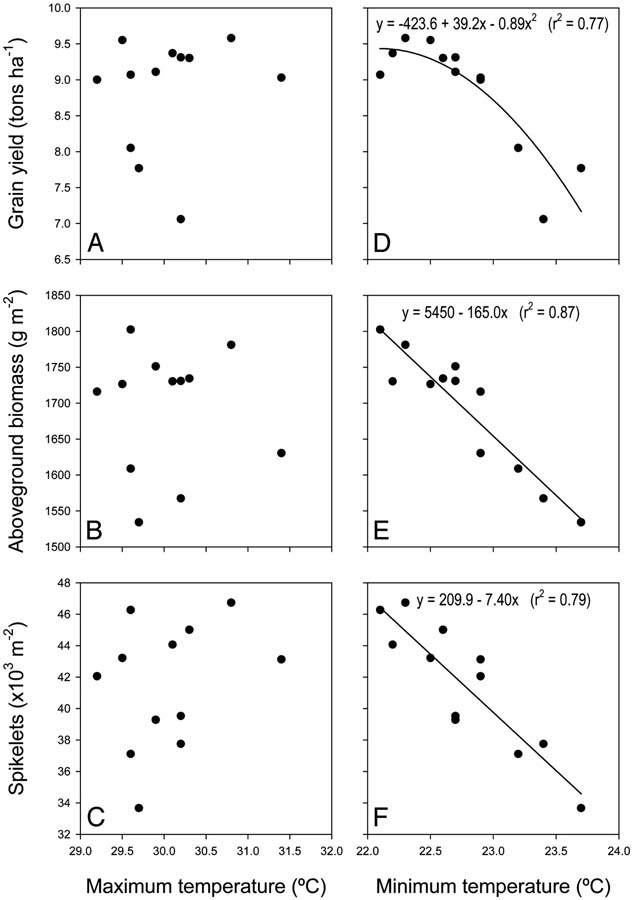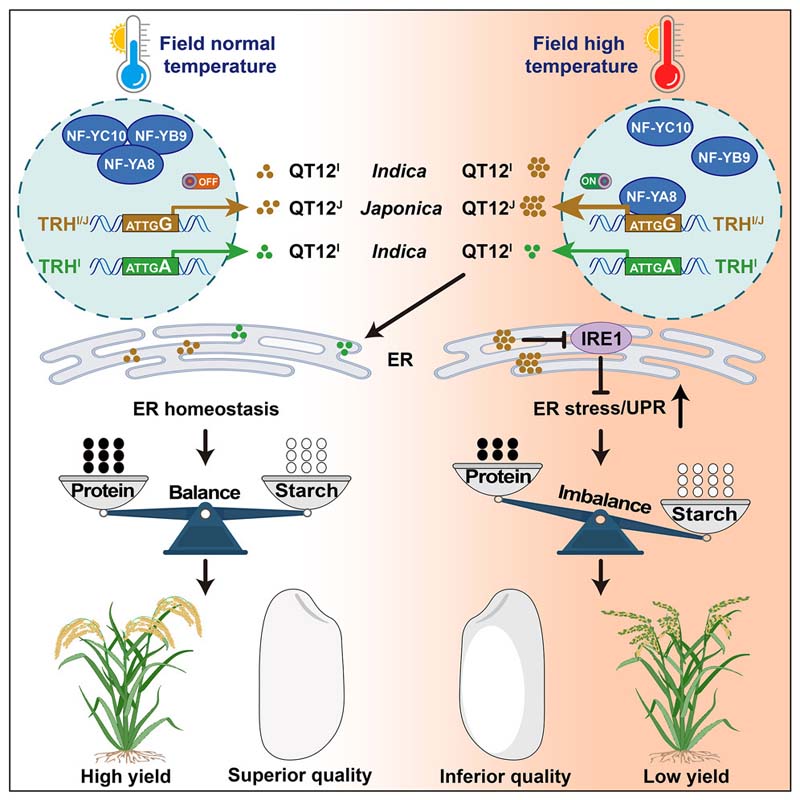
There is no doubts at all that the climate is changing rapidly, and that the average yearly surface temperature has been increasing over the years, with the ten most recent years being the warmest on record.
The focus of naturalists and nature lovers in many cases has been on the effect of such warming on nature. What negative effects will these changes have on plants and animals, and how many species might become extinct because of the rapid warming trend?
But more alarming to us as a species is that climate change can have devastating effects on our crops, and thus have a significant and direct effect on humanity.

A study done by the International Rice Research showed that grain yields in rice crops declined by 10% for each 1 degree Celsius increase in growing-season minimum temperature in the dry season. The aboveground biomass and spikelet numbers also were negatively affected by the rise in minimum evening temperatures, although maximum temperatures did not seem to affect rice growth and production. In addition, the rice grains were of inferior quality and “chalky”, with the endosperm containing loosely packed starch granules instead of tightly packed starch and protein.

This was an extremely alarming result given that rice is a staple food that feeds up to half the population of the world. In fact, as the human population continues to rise, we will need even more crop production in order to keep up and prevent possible mass starvation.
A breakthrough in this quest to solve the problem happened just this year, when rice researchers in China discovered rice variants that were able to resist higher night time temperatures and produce higher quality grains.

Li et al (2025) screened 533 rice varieties for thermotolerance and cross bred two varieties that seemed to fit the bill. They found out from the offspring that the heat resistance seemed to be focused on a gene variant in chromosome 12 which they named QT12.
They studied this and found three transcription factors that normally bonded together during normal temperatures. However, during high temperatures, one of the transcription factors breaks away from this bonding and instead binds to the promoter of QT12. The product of this gene then interferes with the process that enables starch molecules to be packed tightly into the endosperm of the grains even at higher temperatures. This change in the process results in lower yields and inferior rice grains.
This breakthrough in finding out how high night time temperatures cause low yields and inferior rice grains will allow researchers to ultimately create commercial rice varieties that are resistant to the increasing warmth due to climate change. They will do this by either cross breeding the variants with high yield commercial rice varieties, or by genetic engineering of commercial varieties to modify the gene directly.
I should point out that although scientists have continued to save humanity’s “ass” (so to speak) over the years and decades, the politicians still dither and argue about the reality of climate change, and people and corporations continue their harmful actions against the environment. This is not a sustainable situation over the long run.
Literature Cited
Li W, Yang K, Hu C, Abbas W, Zhang J, Xu P, Cheng B, Zhang J, Yin W, Shalmani A, Qu L, Lv Q, Li B, He Y, Lai X, Xiong L, Zhang Q, Li Y. (2025) A natural gene on-off system confers field thermotolerance for grain quality and yield in rice. Cell. Jul 10;188(14):3661-3678.e21. doi: 10.1016/j.cell.2025.04.011.
Peng S, J. Huang, J.E. Sheehy, R.C. Laza, R.M. Visperas, X. Zhong, G.S. Centeno, G.S. Khush, & K.G. Cassman (2004). Rice yields decline with higher night temperature from global warming, Proc. Natl. Acad. Sci. U.S.A. 101 (27) 9971-9975, https://doi.org/10.1073/pnas.0403720101.

Leave a Reply